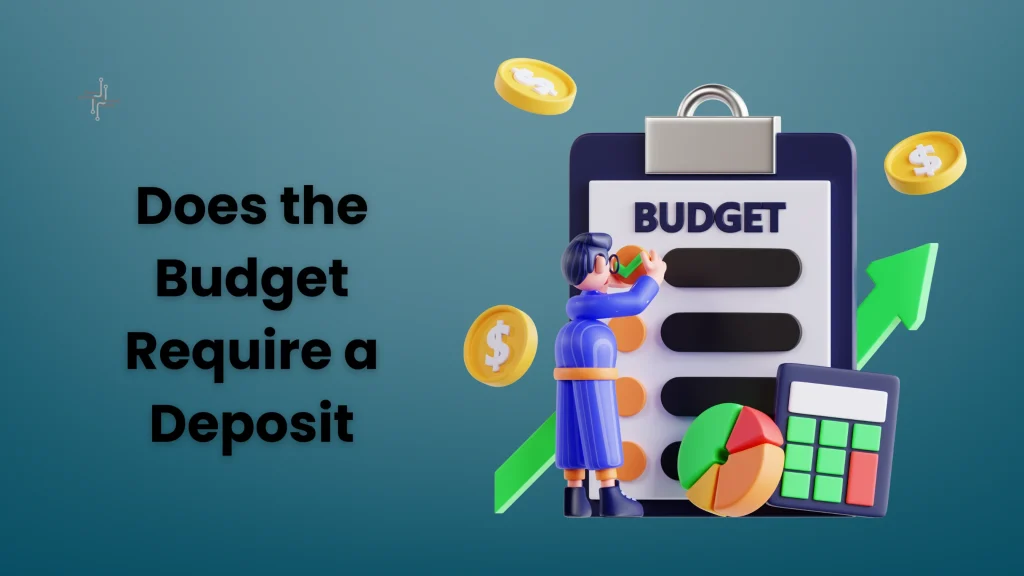$10K is a good amount to start building passive income because it provides enough capital to diversify across different investments. With this amount, you can spread your money into various assets like stocks, real estate, and bonds. This reduces risk and helps you earn from multiple sources. It’s enough to begin seeing steady returns without needing millions to get started.
Additionally, $10K allows for smart, low-risk investments that can grow over time. It’s a manageable amount that can be easily invested in dividend-paying stocks or a high-yield savings account. You can start small and reinvest the profits, making your money grow.
Table of Contents
Investment Options for Passive Income
Real Estate Investment
Real estate involves purchasing property, such as rental homes, commercial buildings, or vacation rentals, to earn rental income. In addition to monthly rent payments, properties can appreciate in value over time, which allows for capital gains when sold. Real estate also provides tax benefits, like deductions for property taxes and mortgage interest. However, it requires upfront capital and may involve property management unless you hire a professional.
Dividend Stocks
Dividend stocks are shares in companies that regularly distribute a portion of their profits to shareholders. These payments are typically made quarterly and can be reinvested to buy more shares. Dividend stocks can provide a steady stream of income, especially if you invest in well-established companies with a history of consistent payouts. Over time, the reinvestment of dividends can lead to compound growth, increasing your returns.
Peer-to-Peer Lending
Peer-to-peer lending allows you to lend money directly to individuals or small businesses via online platforms. In exchange, you earn interest on the money you lend. This form of passive income can offer higher returns compared to traditional bank accounts, but it also carries more risk, as borrowers may default on their loans. Diversifying your investments across several borrowers can help reduce risk in peer-to-peer lending.
High-Yield Savings Accounts
A high-yield savings account offers a higher interest rate than traditional savings accounts, allowing your money to grow faster with minimal risk. Banks and credit unions offer these accounts and are FDIC insured, making them a secure option for passive income. While they won’t generate large returns, high-yield savings accounts are an easy and safe way to earn passive income without needing to actively manage investments.
Bonds and Fixed Income Securities
Bonds are debt securities issued by governments or corporations, where you lend money in exchange for periodic interest payments. At the end of the bond’s term, the principal amount is repaid. Bonds are generally lower risk compared to stocks, making them a reliable source of passive income. Fixed-income securities, which include bonds, provide predictable and steady returns, making them ideal for conservative investors seeking stability in their income streams.
Risk Management in Passive Income Investments
Risk management is essential when investing for passive income, as it helps minimize potential losses and ensures steady returns.
Diversification
Spreading your investments across different assets, such as real estate, stocks, bonds, and peer-to-peer lending, reduces the risk of losing all your money if one investment underperforms. By diversifying, you ensure that if one asset class faces a downturn, others may still perform well, balancing your overall returns.
Evaluating Risk vs. Reward
Before making any investment, it’s crucial to assess the potential risk and reward. High-risk investments, like peer-to-peer lending or stocks, can offer higher returns, but they may also lead to losses. Low-risk investments, like bonds or high-yield savings accounts, offer stable, predictable income but with lower returns. Understanding the level of risk you’re willing to take helps in making informed decisions.
Regular Monitoring
Even though passive income investments require minimal effort, it’s important to monitor them regularly. Keep an eye on the performance of your investments to make sure they are generating the expected returns. If an investment starts to underperform, it may be worth rebalancing your portfolio or shifting funds to more profitable options.
Setting Realistic Expectations
It’s important to set realistic expectations for your passive income. Not every investment will yield high returns quickly. Be patient and understand that passive income often grows over time. Avoid making rash decisions based on short-term market fluctuations, as steady, consistent growth usually leads to better long-term results.
How to Get Started with $10K
Getting started with $10K to generate passive income is a smart move.
Setting Investment Goals
The first step is to define what you want to achieve with your $10K. Are you looking for monthly cash flow, long-term growth, or a combination of both? Setting clear goals will guide your decisions and help you choose the best investment options that align with your risk tolerance and income expectations.
Choosing the Right Investment Strategy
Once you know your goals, it’s time to decide how you want to invest your $10K. For example, if you’re seeking steady income, dividend stocks or real estate might be good choices. If you want growth over time, consider stocks or peer-to-peer lending. A mix of both strategies can balance income and long-term appreciation, providing you with a diversified portfolio.
Starting Small and Gradually Scaling
With $10K, it’s important to start small and learn as you go. Begin by investing in one or two types of passive income options. As you gain more experience and your investments start to pay off, you can reinvest the profits or add more funds to your portfolio to scale your investments.
Reinvesting Earnings
To maximize your returns, consider reinvesting the earnings from your passive income investments. For example, reinvest dividend payments to purchase more shares, or use rental income to invest in additional properties. This approach allows you to leverage compounding to grow your passive income over time.
Staying Consistent
Consistency is key when investing for passive income. Whether it’s reinvesting profits or regularly contributing small amounts to your investments, staying consistent with your strategy helps ensure long-term growth. Over time, this approach can lead to significant returns and financial independence.
Maximizing Returns
Reinvesting Earnings
One of the best ways to maximize returns is by reinvesting the income you earn from your investments. For example, if you’re earning dividends from stocks or interest from bonds, reinvest those earnings back into more shares or bonds. Reinvesting allows your money to grow exponentially over time through the power of compound interest.
Tax Considerations
Taxes can eat into your returns, so it’s important to understand the tax implications of your passive income. For example, dividend income is often taxed at a different rate than regular income. By holding investments in tax-advantaged accounts, like IRAs or 401(k)s, you can defer taxes and maximize your earnings. Consulting with a tax advisor can help you minimize tax liabilities and keep more of your passive income.
Choosing High-Yield Investments
To boost returns, look for higher-yield investments that align with your risk tolerance. High-yield dividend stocks, peer-to-peer lending platforms, or real estate investments in up-and-coming areas can offer better returns than more traditional low-yield options like bonds or savings accounts. However, remember that higher yields often come with higher risk, so balance these investments with more stable options.
Maintaining a Long-Term Focus
Passive income is often most effective when you think long-term. The longer you hold an investment, the more likely it is to grow. Avoid the temptation to sell investments based on short-term market fluctuations. By staying patient and focused on your long-term goals, you give your investments time to compound and increase your returns.
Minimizing Fees and Expenses
Fees can eat into your returns, especially with investment platforms or managed funds. Look for low-cost investment options and be mindful of transaction fees, fund management fees, or brokerage charges. Keeping costs low ensures that a larger portion of your returns stays in your pocket. Always compare fees before making an investment decision.
Common Mistakes to Avoid
When investing for passive income, avoiding common mistakes can help protect your money and ensure steady growth.
- Overcommitting to One Investment: Putting all your money into one type of investment, like real estate or a single stock, can be risky. If that investment performs poorly, you could lose a significant amount. Diversifying your portfolio across different asset classes, such as stocks, bonds, and real estate, helps balance risk and protect your income stream.
- Ignoring Fees and Expenses: Many investments come with hidden fees, such as brokerage fees, management fees, or transaction costs. These fees can reduce your overall returns. It’s important to research and choose investments with low fees and be aware of any associated costs. Even small fees can add up over time and eat into your profits.
- Chasing High Returns Without Understanding the Risk: High returns can be tempting, but they often come with higher risks. It’s essential to evaluate the potential downsides of an investment before jumping in. If the returns seem too good to be true, the risk may be higher than you’re comfortable with. Always assess your risk tolerance and make informed decisions based on your financial goals.
- Neglecting to Monitor Investments Regularly: Passive income investments may not require daily attention, but it’s still important to monitor their performance regularly. Markets can change, and some investments may underperform. Keeping an eye on your investments allows you to make adjustments if necessary, like reallocating funds or reinvesting profits to maintain growth.
- Failing to Reinvest Earnings: Passive income works best when you reinvest the earnings from your investments, such as dividends or interest. Failing to reinvest can slow down the growth of your portfolio. Reinvesting allows you to compound your returns and accelerate the growth of your income stream over time.
Conclusion
Investing $10K for passive income is a smart way to build wealth over time. By choosing the right investments, such as real estate, dividend stocks, or bonds, you can start earning steady income without much effort. Diversification is key to reducing risk and ensuring consistent returns.
Remember to set clear goals, choose investments wisely, and reinvest your earnings to maximize growth. Stay patient and avoid common mistakes like overcommitting to one asset or neglecting fees. With careful planning, your $10K can generate a reliable stream of passive income for years to come.


